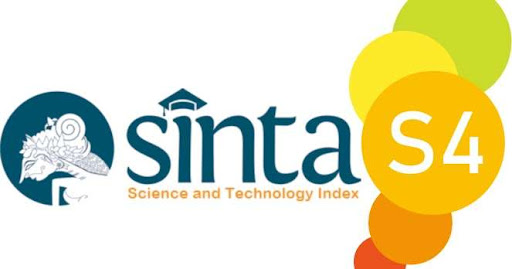INTERUPSI OLEH PEMBAWA ACARA PRIA DAN WANITA DALAM PROGRAM TALK SHOW KOMEDI DI INDONESIA: INTRUSIF ATAU KOOPERATIF?
DOI:
https://doi.org/10.36733/sphota.v14i2.5047Keywords:
interruption, gender, talk show, comedyAbstract
Abstract
Interruptions in conversation are considered as a form of domination. Several prominent studies concluded that male tend to dominate the conversation by interrupting more often than female in mixed-sex conversation. However, interruption found to have other functions, which used to show a positive attitude. Therefore, this present study employed a descriptive qualitative method to investigate the function of interruption by male and female presenters in comedy talk shows in Indonesia using the classification of interruption by Zhao (2003) and Tao (2018). The findings pointed out that interruptions are not only aimed as a form of domination but also function as the form of cooperative and intrusive way in conversation. Related to gender study, female presenters are likely to use cooperative interruption while male presenters dominantly use intrusive interruption. Moreover, this study also revealed that intrusive interruption performed not only to show disagreement towards interlocutors but also may cause laughter that shows positivity from the audiences
Abstrak
Interupsi dalam percakapan dinilai sebagai sebuah bentuk dominansi. Beberapa studi terkemuka menyimpulkan bahwa laki-laki cenderung mendominasi dalam percakapan antara lawan jenis dengan menginterupsi lebih banyak dibanding perempuan. Akan tetapi, interupsi ditemukan memiliki tujuan lain yang bersifat positif. Oleh karenanya, penelitian ini merupakan penelitian deskriptif kualitatif yang bertujuan untuk melihat tujuan interupsi yang dilakukan oleh pembawa acara laki-laki dan perempuan dalam talk show komedi di Indonesia menggunakan klasifikasi interupsi oleh Zhao (2003) dan Tao (2018). Hasil studi menunjukkan bahwa interupsi tidak hanya berfungsi sebagai bentuk dominansi tetapi juga dapat menunjukkan bentuk kooperatif dan intrusif dalam percakapan. Terkait dengan studi gender, pembawa acara perempuan cenderung menggunakan interupsi kooperatif sedangkan pembawa acara laki-laki secara dominan menggunakan interupsi intrusif. Selain itu, ditemukan bahwa interupsi intrusif tidak hanya menunjukkan bentuk pertentangan terhadap lawan bicara namun juga dapat menyebabkan tawa yang bersifat positif dari penonton.
References
Fishman, P.M. (1983). Interaction: the work women do dalam Thorne, Barrie. Kramarae, and Henley, N, (eds) Language, Gender and Society. London and Tokyo: Newbury House.
Goldberg, J. A. (1990). Interrupting the Discourse on Interruptions. Journal of Pragmatics, 14 (6), 883–903.
Holmes, J. (1992). Women’s Talk in Public Contexts. Discourse & Society 3(2): 131-150.
Iqbal, N., & Azhar, K, A. (2019). Turn-taking and Gender Differences in Language Classroom. Journal of Nelta, 23(1-2), 54-67.
Johannes, G., Ginting, S. A., & Natsir M. (2020). The Interruption Used in Mixed Gender in Ini Talk Show on Net Tv. Linguistica. 9 (2), 308-317
Kennedy, C. W. & Camden, C.T. (1983). A New Look at Interruptions. Western Journal of Speech Communication, 47, 45-58.
Kuyentertaiment. 2021, Agustus 31. Enzy &Hesty ngakak!! Arafah pusing punya adek kayak pungli!! Tiap bantuin minta upeti. Youtube. https://www.youtube.com/results?search_query=halda+arafah+hesti+enzy
Kuyentertainment. 2022, May 6. Kocak! Halda bongkar stresnya Arafah! Ampe ke psikolog gegara Bintang Emon?. [video]. Youtube. https://www.youtube.com/watch?v=I5rw7hODhGU&t=503s
Lu, P., & Huang, C. (2006). Interruption in Mandarin Mother-child Conversation. Concentric: Studies in Linguistics, 32(2), 1-31.
Malammalamnet. 2021, Oktober 23. Uang adalah Hal yang Bikin Kakak Beradik ini Makin Akrab-Talkpod. Youtube. https://www.youtube.com/results?search_query=surya+mongol+arafah
Menz, F., & Al-Roubaie, A. (2008). Interruptions, status and gender in medical interviews: The harder you brake, the longer it takes. Discourse & Society, 5, (645-666)
Murata. (1994). Intrusive or Cooperative? A Cross-Cultural Study of Interruption. Journal of Pragmatics, 21, 385-400
Rubiyanti, R. (2017). The Study of Interruption in a Mixed-Gender Talk Show Conversation. Passage, 5(1), 147-150.
Schegloff, E. A. (2000). Overlapping Talk And The Organization of Turn-Taking For Conversation. Language in Society, 29, (1-63)
Sacks, H., Schegloff E, A., & Jefferson, G (1974). A Symplest Sistematics for the Organization of Turn Taking for Conversation. Language, 50, (696-735)
Samar, G. R., & Alibakhshi, G. (2007). The Gender Linked Differences in the Use of Linguistic Strategies in Face-to Face Communication. The Linguistics Journal, 3 (3), (59-71)
Subrayan, A. & Muthusamy, C. (2021). Power-oriented and Rapport-oriented Interruptions Among Professional Women in Small Group Conversations. Journal of Language Teaching and Research, Vol. 12, No. 4, pp. 585-594.
Tannen, D. 1990. You just Don’t Understand: Women and Men in Conversation. New York: William Morrow Tao, Y. 2018. Interruption Elicits Laughter: Cooperative and Intrusive Interruptions in a Chinese Talk Show Host’s Conversation. Studies in English Language Teaching, Vol. 6, No. 4.
Zhao, X. Ghantz, W. 2003. Disruptive and Cooperative Interruption in Prime Time Television Fiction: The Role of Gender, Status and Topic. Journal of communication. Hal. 347-362.
Zimmerman, D. & West, C. (1975). Sex roles, interruptions, and silences, in conversation, in B. Thorne and N. Henley (eds) Language and Sex: Difference and Dominance. Rowley: Newbury House
Zouch, A. (2016). Interruption and Gender in Academic Group Discussions: Tunisian Undergraduates as a Case Study. International Journal of Arts and Sciences, 9 (2), 445-460.














